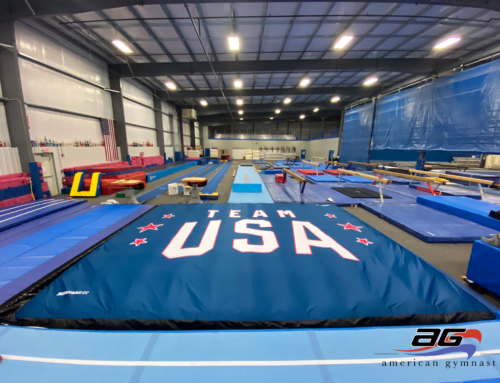When a competition is as exciting and unpredictable as this year’s world men’s team final was, the results almost don’t even matter.
For a team like the United States, perspective is everything. After placing 4th at last year’s worlds in Rotterdam, getting back onto the podium – where it had been back in Athens 2004 and Beijing 2008 – was definitely the primary goal. With a fantastic team performance, including 17 out of 18 hit routines, they now have world bronze medals to wear around their necks. Mission accomplished.
But should it have been silver? When the final rotation began, it appeared the battle would be for gold between the two teams who have been favored all along – Japan and China. Finishing on high bar with three nailed routines in front of a thunderous home crowd in Tokyo would have been the storybook ending these Japanese men have no doubt been dreaming about for countless nights, and would have been reminiscent of the gold-medal winning Japanese team in the 2004 Olympics.
But an unexpected twist occurred that suddenly changed the real battle into one for the silver – between Japan and the United States. The fall from second up Yusuke Tanaka was certainly devastating, but probably not all that shocking considering he had just suffered a potentially very serious concussion – and apparently a neck strain – just three days before. But then the unthinkable happened, when the man who can do no wrong found himself standing next to the bar in the middle of his high bar routine, probably wondering himself what had just happened. Kohei Uchimura’s fall on a Covacs made many of us do a double-take – not only at the shaking bar, but at the scoreboard.
Fans will likely argue for years about whether Japan or the United States truly deserved this silver medal – particularly considering the Japanese suffered three falls throughout the team final, and the USA only one. After Jonathan Horton’s fall on vault, the USA rebounded to produce some of the most clutch routines on parallel bars and high bar they’ve ever done. Despite some slight vulnerabilities on pommel horse and rings earlier in the competition, the six routines they delivered on the final two events looked more than just medal-worthy – they looked world champion worthy. The difficulty and level of risk in these routines was astounding. Their skills were innovative. Their form and body lines were exquisite. Almost all of their landings were stuck. But not a single one of these six dazzling routines from the Americans scored above a 9.0 in execution.
John Orozco’s parallel bars routine was so flawless and confident you’d practically need a microscope to detect a single error…yet the judges deducted over a point. The same happened to Horton and Leyva. And although scores in the low to mid-15’s on high bar are very strong, when you consider the start values for Leyva and Horton in particular were 16.9 and 16.8, they become more curious than anything else.
But this may be more a widespread judging issue – or perhaps “epidemic” is more appropriate – than a personal attack on the USA. After all, it’s not as if the judges are throwing 9.6’s and 9.7’s to the Chinese and Japanese for often equally impeccable work.
It would take a comprehensive review of every American and Japanese routine in this final to truly determine who the deserving silver medalist was, and even then the votes would likely be split. But it makes one wonder whether today’s scoring system in general is truly distinguishing the mistakes from the hit routines, and whether perfect gymnastics is being appropriately rewarded.
Congratulations to China, for delivering under pressure and winning a deserved fifth straight world team title. And congratulations to Russia for one of its best team performances in recent history, and for giving the top three teams quite an unexpected scare going into the final event.
And congratulations to Japan and the USA for closing in on China and helping make this team final exactly what a team competition is supposed to be – a thrilling race to the finish in which the outcome is undecided until the final routine is complete.



This article honestly reeked of sour grapes. The US men were no where as perfect as described. They chucked vaults, and Kohei, although he fell, upgraded his routine on the spot to up his d-score – this in and of itself is often unheard of in gymnastics, so kudos to him for not only being to think on the spot, but to perform an upgraded routine under tremendous pressure. The silver medal to Japan was well worth it. I wish people will stop making excuses for the US.
100% Agreed…. US are sour grapes EVERYTIME they come up short. I won’t even comment on the women’s AA…. learn to be a gracious loser and stop acting like spoiled brats!!
how did Kohei up his D score? I know the commentators on universal sports said that, but they were wrong. He did the exact same routine he did in the prelims and the AA finals. All he did was repeat the kovacs he fell on so that he still got the value for it. That is not upgrading a routine, that is repeating a missed skill.
It is amazing that in some routines it impossible to work out how the judges came up with so many deductions, yet with the chinese high bar it is hard to work out how they came up with so few. So many turning skills from the Chinese should have had 0.3 or 0.5 for being very late. Even on simple kip cast half turns, yet their E-scores are the same as others who have hardly any obvious deductions. The scores for China on high bar should have been 3.0 lower than it was – putting China in 3rd!